Clinker Cooler
Cement kiln feed becomes clinker after being sintered in the rotary kiln. Then it must be cooled — this is where the clinker cooler comes in. Clinker coolers bring the product to ambient temperature for the grinding process and recover heat from the clinker that is useful for combustion.
To work properly in operating conditions, the refractory products require resistance to abrasion, thermal shock, and alkali. Monolithic cooler linings are comprised of a working lining, an insulation layer, and an effective anchoring system.
Variables for Clinker Cooler Operators
- At the discharge of the cooler, the temperature of the clinker should be as cool as possible.
- Clinker bed depth should allow free passage of air through the clinker.
- Control settings shouldn't allow overheating.
Selecting Refractory for Clinker Cooler
The inlet zone requires products of higher alumina content to provide the necessary thermal resistance. The refractory materials in the compartments following the inlet zone require progressively lower thermal resistance, but greater abrasion-resistant materials. QuikTurn is often the preferred product line because of the difficulty with drying out refractory castables in the clinker cooler.
| Roof | Inlet | Sidewalls | Curbs | |
| Casting | QT60PC | Quikturn 32-70 | 1st Compartment QT60PC 2nd Compartment Quikturn 45PC |
Quikturn 32-70PC R-Max PC QT Quikturn 60PC |
| Gunning | Rescobond 3000G | R-Max G-QT | Quikturn 60G |
Typical clinker cooler products include the QuikTurn 60PC for casting applications and the QuikTurn 60G for gunning areas such as the tertiary air duct outlet. For the most severe abrasion, select the R-Max PC QT or the R-Max G QT. For further cement questions or assistance, contact Resco Products.

